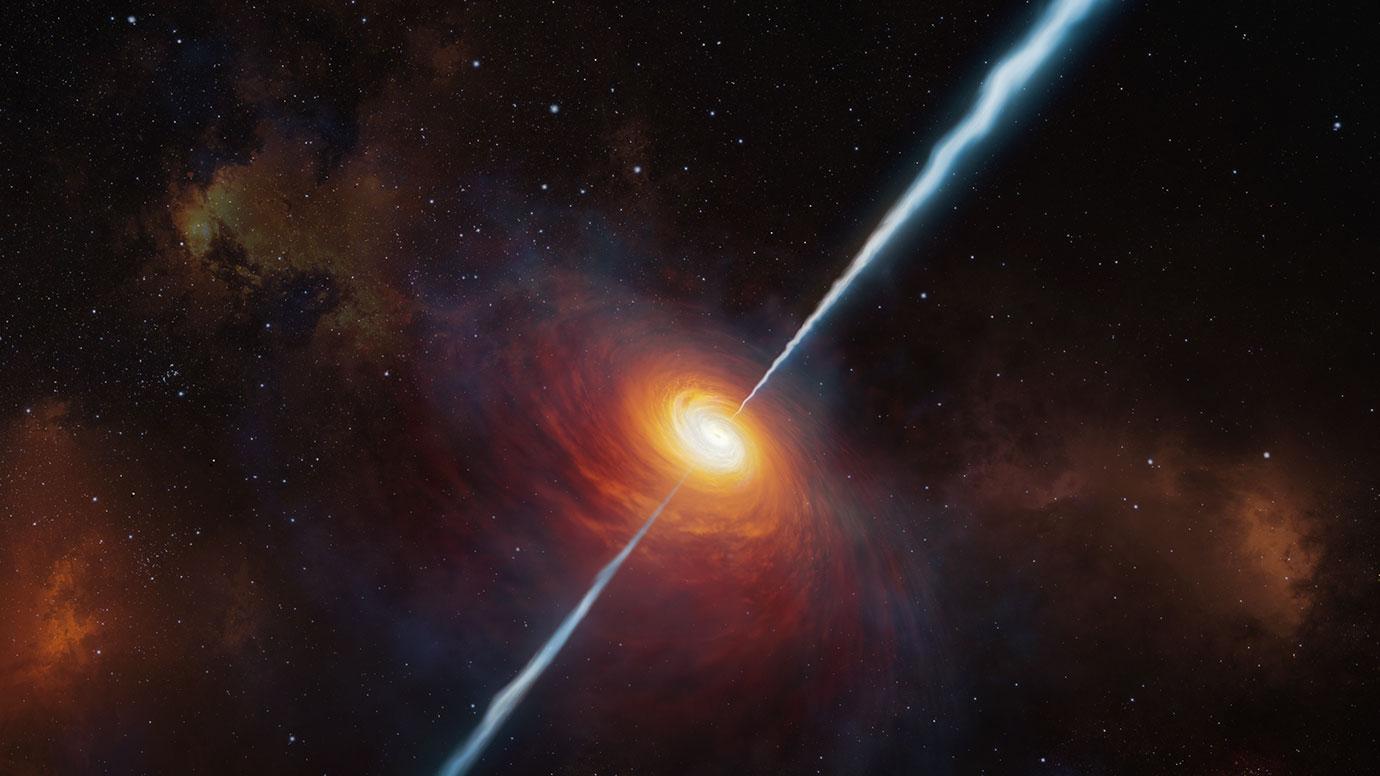Everything that falls into a black hole falls in at the same time. Perhaps in the distant past, some unfortunate alien astronaut was sent past the event horizon to explore what lies beyond. From our perspective, he is still falling across the threshold. He has been since he first fell in, back before his civilization crumbled, before his home planet tumbled into its sun, and that sun collapsed into a white dwarf.
From his perspective, he only just crossed it. What will he find on the other side? As of right now, physics only has guesses. In this week’s Great Mystery of Outer Space, we cover the uncertain insides of black holes.
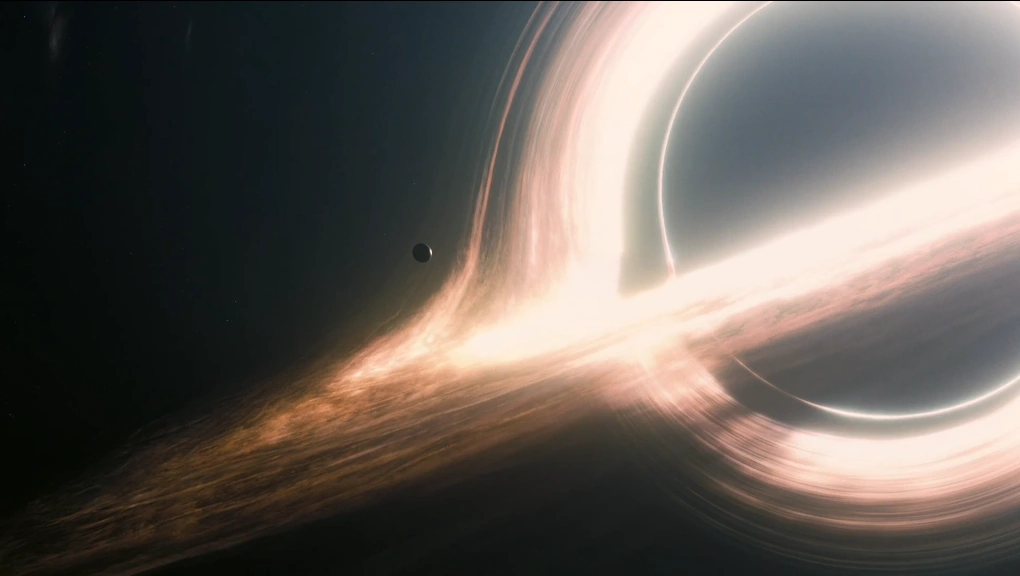
The movie Interstellar provided some of the best-ever simulations of black holes by giving theoretical physicist Kip Thorne access to Hollywood’s financial and computational resources. When director Christopher Nolan originally suggested the existence of a planet near the event horizon, Thorne instinctively said it couldn’t happen. After running several scenarios through Einstein’s equations, though, he found it was possible. Photo: Warner Bros/Paramount
Black holes might be mysterious, but they’re real
Albert Einstein believed black holes to be a grand mistake. They were a natural extension of his theory of general relativity, a set of otherwise airtight formulations of how gravity and light behave, but they could not possibly be real. After all, how could anything have mass if it was infinitely small? How could it trap light within it, thereby removing information from the universe?
He set out to disprove their existence in a 1939 paper, and while his conclusions were correct, he started from a set of assumptions that were not.
Unfortunately for Einstein, the existence of black holes has now been proven over and over again. First, by strange X-rays from a star being shredded apart by something massive. Then came the ultra-bright radio emission in the center of galaxies from disks of matter orbiting an invisible center. Strange orbits, things lurking at the heart of supernovae remnants, and huge jets of plasma in distant galaxies all added evidence.
In 2015, the Laser Interferometer Gravitational-Wave Observatory (LIGO) detected gravitational waves from a pair of distant black holes colliding. And finally, in 2019, the Event Horizon Telescope (EHT) succeeded in directly imaging the center of nearby galaxy M87. Black holes don’t emit light, and the shadow they leave is visible against the bright plasma around them. The EHT images of M87’s black hole shadow are the closest we can get to photos of a black hole itself.
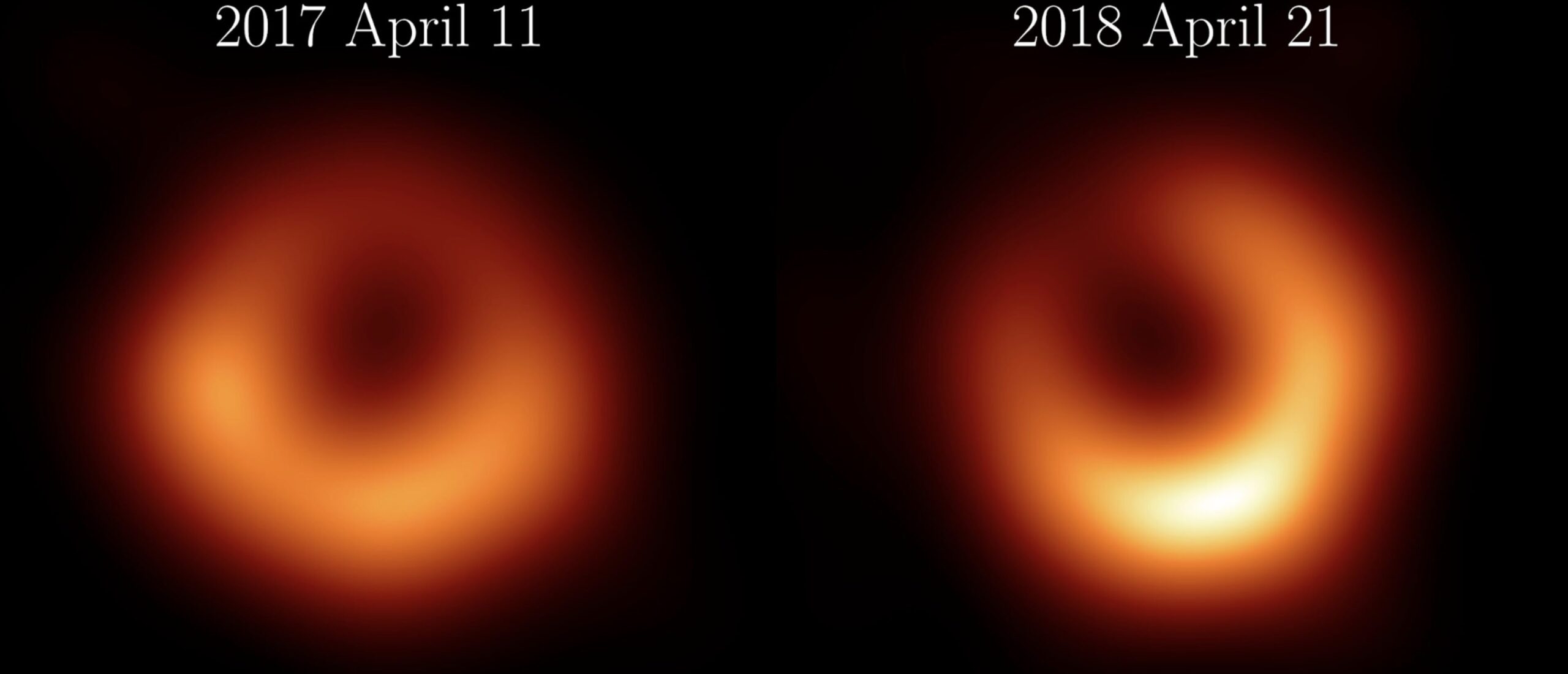
The supermassive black hole at the center of nearby galaxy M87 leaves a shadow against the plasma surrounding it. Between 2017 and 2018, the images show the plasma rotating. Photo: EHT
The anatomy of a black hole
Hear me out: black holes are the simplest objects in the universe. No, really, I promise. They only have two features of note.
The first is the event horizon, which isn’t technically part of the black hole itself. Instead, it’s the distance from the black hole where gravity becomes so strong that nothing, not even light, can escape the inexorable pull toward the center. Material caught in the black hole’s orbit circles around the event horizon, disrupted by the strong gravity and by colliding with other matter. This is what causes the bright rings known as accretion disks and the flares called, in various different circumstances, quasars or active galactic nuclei.
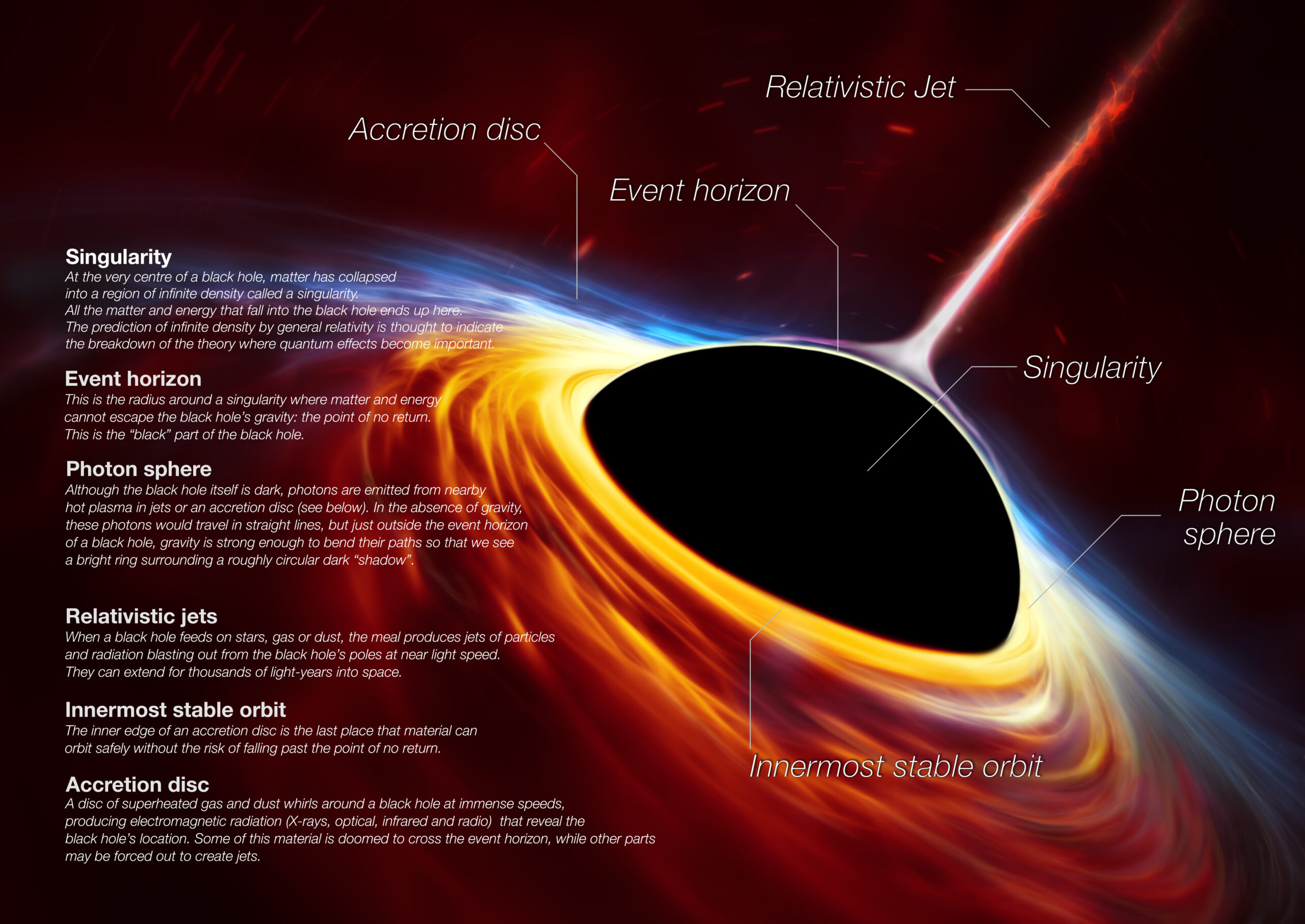
An artist’s impression of a black hole. Photo: ESO
Right at the event horizon is where things get very, very strange, but it’s a known kind of strange. The laws of general relativity predict that everything that crosses the event horizon crosses it at the same time, and to an outside observer, things crossing it freeze. In fact, before physicist John Wheeler coined the term “black holes,” most physicists referred to them as “frozen stars.” (Personally, I find the original name much more evocative.)
Far below, at the center, lurks the singularity. It is an infinitely small point or, in certain peculiar cases, an infinitely thin ring. It can weigh up to 1011 times the mass of the Sun. It has no dimensions, no volume, no time. But it has a lot of mass.
Just what is a singularity?
In the clumsiest terms, a singularity is a place that’s very weird compared to everything else around it. The usual laws don’t seem to behave so well around singularities; that’s what makes them so singular. The idea of a point with infinite density makes sense on paper. It falls right out of Einstein’s equations, much to the consternation of Einstein himself. But elsewhere in physics, the presence of singularities tends to indicate the theoretical models are missing a few components.
That’s what many physicists believe is happening with the black hole singularity. The infinitely small point might not physically exist, but general relativity can’t quite grapple with the true nature of black holes.

A simplified representation of black hole anatomy, represented in only two dimensions. Photo: Swinburne University
If the singularity is quite small but not infinitely so, then it’s the purview of the theory known as quantum gravity. Unfortunately, quantum gravity barely exists.
The world of physics needs a mathematical formulation of how gravity behaves at small scales. It needs something revelatory and revolutionary, the quantum gravity equivalent of general relativity. That’s a hard ask. The only widely popular framework to attempt it is string theory, an astoundingly beautiful theory of nature that, after more than 60 years of development, has yet to predict anything testable.
So the nature of the singularity remains, for now, a mystery.
Okay, but what would the ‘singularity’ actually do?
We don’t know what a singularity is. Do we know what it does?
The answer is maybe. General relativity is a set of laws, not a recipe. Mathematically, there are many recipes for how space works that obey the laws of general relativity. Among these recipes (obscurely called “metrics” in physics lingo), several are more pertinent to our lived reality than the others.
The Schwarzschild metric, for instance, describes spacetime around spherically symmetric points, black holes included, as long as those points aren’t spinning. The Kerr metric takes it a step further and describes spacetime around points that are spinning, which adds in a slew of bizarre effects with intimidating names like “frame dragging.”
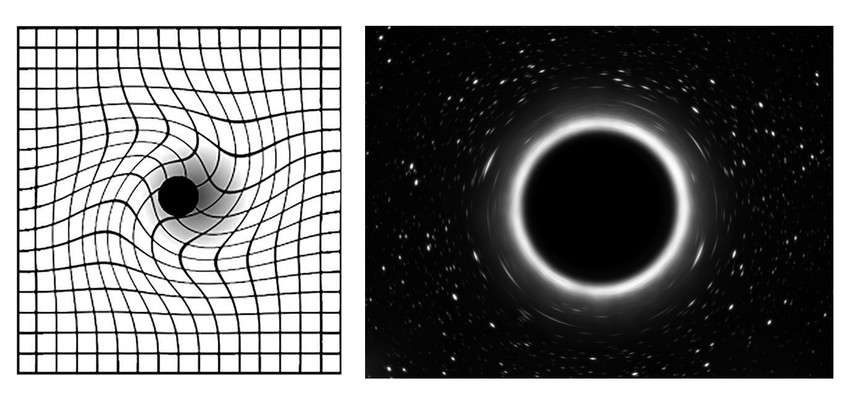
One of the most peculiar effects of rotating black holes is frame dragging, where everything around them gets smeared out. Photo: Alessandro Rizzo
Buried in some of these distinct metrics are places where Einstein’s equations give out. With well-understood metrics there as guide rails, physicists can fill in some of the blanks.
Currently, common thought is that the unknowable singularity at the center of a black hole probably devolves into three marginally more knowable ones as the black hole ages.
Singularities to watch out for
Three singularities in particular might haunt the insides of an aging black hole. We’ll start with the worst news first: the BKL singularity. Formally named the Belinski–Khalatnikov–Lifshitz singularity after its discoverers, the BKL singularity is also known as the chaotic or oscillatory singularity. That’s because as an observer approaches it, their body is subject to increasingly violent tidal forces that alternately stretch and compress them. If anything in a black hole is most out to get humans, it’s the BKL singularity.
Then there’s the ingoing singularity. All of the matter and light that falls into the black hole gathers together, falling for infinity. The gravity of this region can be so strong that it forms its own singularity. Good news, though: the region where matter congregates might be so thin that other objects can actually pass through it undeterred.
Similarly, the outgoing singularity arises from the light that bounces off things inside the event horizon and then travels backward, colliding with the ingoing singularity. What happens then is unclear, but once again, it might be avoidable.
The predictions above have serious mathematical credentials, but at the end of the day, the nature of the singularities are still unknown. So, too, is the state of matter inside a black hole. Can matter survive the event horizon? Where is it located? Is it converted to light or even gravitational waves?
We can only hope that a new theory of quantum gravity will illuminate the insides of a black hole.
